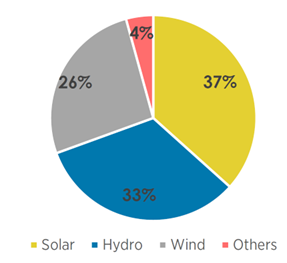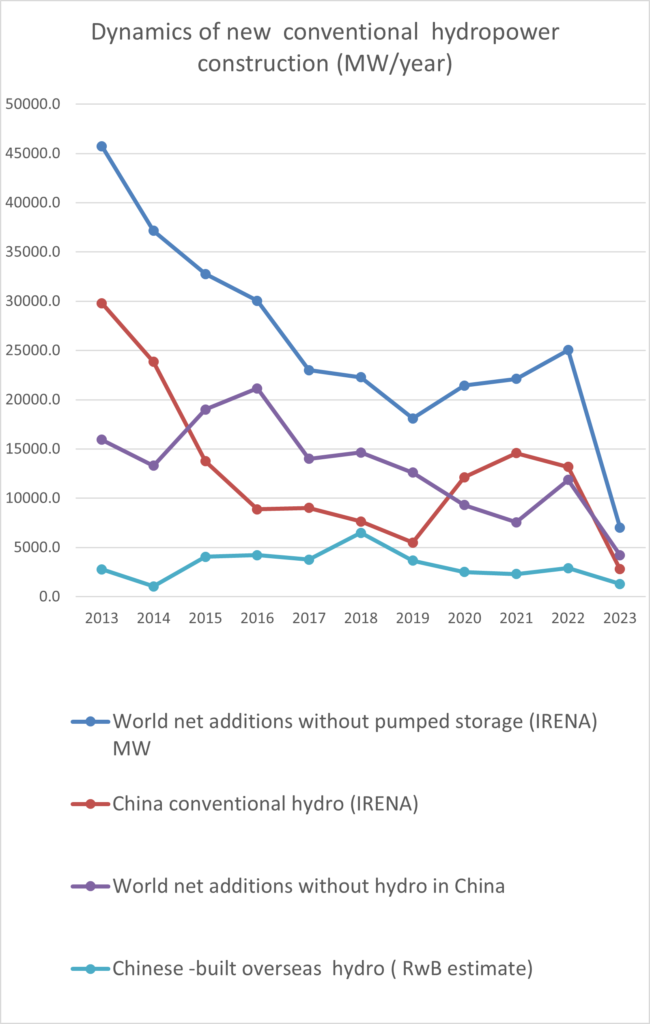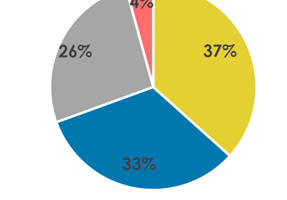
A year earlier than it was previously forecasted to happen the installed capacity of solar power plants reached 37% of all global renewable energy, which left hydropower behind with 33%.
Renewable Capacity Statistics 2024 released by the International Renewable Energy Agency (IRENA) shows that 2023 set a new record in renewables deployment in the power sector by reaching a total capacity of 3 870 Gigawatts (GW) globally. Renewables accounted for 86% of capacity additions; however, this growth is unevenly distributed across the world, indicating a trend far from the tripling renewable power target by 2030. While installed in 2023 almost 300 GW, all countries of Africa installed only 2.7 GW.
- Solar photovoltaics increased by 345.5 GW last year. China alone added 216.9 GW to the total expansion.
- Wind energy grew at an increased rate of 13%. Expansion was dominated by China and the United States.
- Conventional hydropower (excluding pumped storage hydro)grew by 7 GW, with the lowest expansion in a decade. This constitutes 1.5% from all renewables installed in 2023. China, Colombia and Nigeria added more than 0.5 GW each.
- First time in history China added more pumped storage hydro (5 GW) than conventional hydro (2.8 GW).
- China’s appetite for overseas hydropower projects seem to decrease along with decreasing domestic construction. We assume involvement of Chinese companies only in 1.5 GW of capacity installed outside of China.

Reasons why hydropower rapidly loses its appeal are very clear and straightforward:
- Cost of hydropower construction is gradually increasing and in 2023 was 2-6 times more expensive than wind or solar power plants, which are rapidly getting cheaper.
- Project development and construction cycle for hydropower is 4-10 times longer and prone to unforeseen delays.
- Hydropower is becoming less reliable source of energy due to increasing climate risks.
- Development of hydropower is associated with much greater environmental and social problems than in case of wind and solar. Much of negative impact cannot be mitigated as the industry inevitably destroys critical freshwater habitats.
All that said, we still observe strong international efforts to revive this dying industry in remote corners of the world where lack of technical capacity and poor governance systems prevents countries from developing efficient renewable energy systems. In 2023, besides China, sizeable hydropower capacity was installed in Colombia, Democratic Republic of Congo, Nigeria, Nepal, Iran, Turkey and Cambodia. The list also includes Norway and Switzerland, which are deeply addicted to hydropower domestically and are among the fierce lobbyists for hydropower subsidies in international financial institutions.


